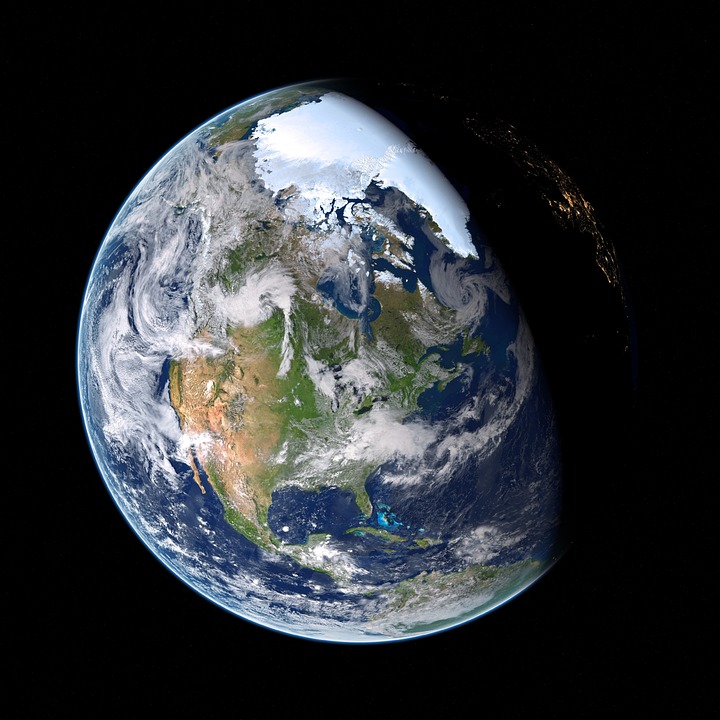Your Guide to Tonight’s Celestial Show: What Planets Can You Spot?
The night sky has long fascinated humanity. From ancient civilizations who looked to the stars for guidance to modern astronomy enthusiasts, the celestial bodies above us tell a story that spans time and space. If you’re eager to step outside tonight and gaze at the wonders of our solar system, this guide will help you identify which planets are visible and how to spot them.
Introduction to the Planetary Show
Every night, the celestial stage is set, but the performers change. Our solar system comprises eight recognized planets, each with its unique characteristics and visibility conditions. In this guide, we will walk you through how to identify these planets, their significance in astronomy, and tips for enhancing your stargazing experience.
Understanding Planetary Visibility
Before diving into specifics about each planet, it’s essential to understand a few factors that affect their visibility:
-
Orbital Position: The relative positions of the planets to Earth play a crucial role. Some planets are often “invisible” because they orbit too close to the Sun, remaining behind it from our perspective.
-
Time of Year: Certain planets are more visible at different times of the year. For example, certain planets may be high in the sky during summer nights but low on the horizon in winter.
-
Weather Conditions: Clouds, fog, and light pollution can obscure your view of the night sky. Clear, dark skies are ideal for planet-watching.
- Moon Phase: A bright full moon can wash out the dimmer planets, while a new moon offers a dark canvas against which the planets can shine.
The Seven Planets You’ll Typically Spot
1. Mercury
- Visibility: Mercury is often challenging to spot due to its proximity to the Sun. It’s best viewed during dawn or dusk, just before sunrise or just after sunset.
- Characteristics: Mercury is the smallest planet in our solar system and has no atmosphere to speak of. Surface temperatures vary dramatically, making it an inhospitable place for life.
- Observation Tips: Look for a bright object near the horizon shortly before sunrise or just after sunset.
2. Venus
- Visibility: Often referred to as the “Evening Star” or “Morning Star,” Venus is one of the brightest objects in the night sky and can often be seen in the west just after sunset or in the east just before sunrise.
- Characteristics: Venus is similar in structure to Earth but is shrouded in thick clouds of sulfuric acid. The greenhouse effect makes it the hottest planet in our solar system.
- Observation Tips: If you spot a bright "star" during twilight, it’s likely Venus. Binoculars or a small telescope will reveal its phases, much like the Moon.
3. Mars
- Visibility: Mars is known for its reddish hue, making it relatively easy to identify. When at opposition, it can be exceptionally bright and visible all night long.
- Characteristics: Mars is often the subject of fascination due to its potential for past life and ongoing exploration. Its surface features, such as Olympus Mons and Valles Marineris, are monumental by Earth standards.
- Observation Tips: Look for a bright red star-like object. Telescopes can reveal polar ice caps and surface features. Mars’ brightness varies greatly, so check maps or apps for its current visibility.
4. Jupiter
- Visibility: Jupiter is the largest planet in our solar system and stands out in the night sky. It is easily identifiable due to its bright, steady light.
- Characteristics: With at least 79 moons, including the four largest known as the Galilean moons (Io, Europa, Ganymede, and Callisto), Jupiter is a mini solar system of its own.
- Observation Tips: Look for a bright object in the eastern sky. A small telescope or even binoculars will reveal Jupiter’s moons as tiny points of light next to the planet.
5. Saturn
- Visibility: Saturn is often best viewed when it’s high in the sky during the late summer and fall months. Its distinctive rings make it one of the most recognizable planets in the solar system.
- Characteristics: Saturn is a gas giant with a complex ring system made of ice and rock particles. Its largest moon, Titan, is of particular interest to scientists.
- Observation Tips: When spotted through a telescope, Saturn’s rings appear breathtakingly beautiful, and you may even see some of its moons.
6. Uranus
- Visibility: Uranus is faint and requires very dark skies for spotting without a telescope. It’s typically visible in the late evening sky.
- Characteristics: Often described as an "ice giant," Uranus has a unique tilt, rotating on its side compared to other planets.
- Observation Tips: A small telescope can reveal Uranus as a faint blue-green disc. Look for it near its more easily spotted neighbor, Aries.
7. Neptune
- Visibility: Neptune is the furthest planet from the Sun and is faint, making it difficult to spot without a star map. It’s best viewed with a telescope.
- Characteristics: Similar to Uranus, Neptune is an ice giant rich in methane, giving it a deep blue color. Its dynamic atmosphere includes strong winds and storms.
- Observation Tips: Use a star chart to locate Neptune—its positioning varies slightly from year to year. An 8-inch telescope or larger will provide the best views.
Tools for Stargazing
While the naked eye can identify some planets, various tools can enhance your experience:
-
Binoculars: A good pair of binoculars can significantly improve your view of planets, letting you see details that are not visible to the naked eye.
-
Telescopes: For serious astronomers, telescopes reveal incredible details. They can help observe moons, rings, and even some features of planets like Mars.
- Stargazing Apps: Modern technology makes identifying celestial bodies easier with apps that can guide you based on your location and the date. Some popular apps include SkySafari and Star Walk.
Planning Your Stargazing Experience
When preparing for a night of celestial observation, consider these tips:
-
Choose a Dark Location: Avoid city lights and find a dark, open area for the best sky visibility.
-
Check the Weather: Cloudy nights can be disappointing, so monitor weather forecasts and satellite images.
-
Know What to Look For: Consult star charts or celestial calendars for the most active nights and what planets to expect.
-
Be Patient: The night sky offers many hidden gems. Take time to soak in the environment and be open to unexpected sights.
- Have a Friend Join You: Sharing the experience can enhance your enjoyment and excitement, turning it into a memorable outing.
Conclusion
The night sky serves as a canvas painted with the vibrant colors and movements of celestial bodies. Whether you’re an amateur astronomer or a curious night owl, spotting planets can feel like a journey through time and space. By understanding the characteristics of each planet and planning carefully for your stargazing experience, you can maximize your enjoyment of tonight’s celestial show.
Get ready to step outside, gaze up at the stars, and marvel at the wonders of our solar system. Who knows what you might discover?
References
Modern sources for celestial events and planet visibility can be found through various reliable astronomical organizations, apps, and websites. For more detailed information, consult resources such as:
- The American Astronomical Society
- NASA’s official website
- Mobile applications like "SkyView" and "Stellarium"
- Local observatories and planetarium events
By engaging with these resources, you can stay informed about upcoming celestial events and maximize your experience in the night sky. Happy stargazing!
























Add Comment